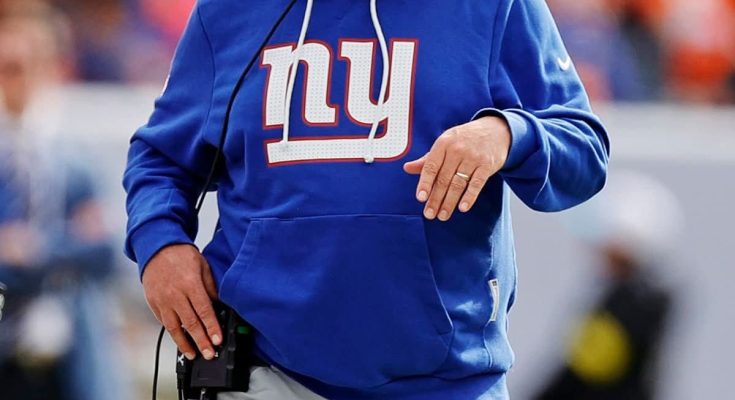In the world of professional football, certain statistics and records stand out for their sheer improbability or demonstration of dominance. One such remarkable statistic was recently reset during an NFL game when the New York Giants were defeated by the Denver Broncos. Prior to this game, NFL teams had amassed an astonishing 1,602 consecutive victories when they held a lead of 18 points or more with just six minutes remaining in the fourth quarter. This figure, reported by CBS and announcer Kevin Harlan, underscores an almost unbreakable trend in the league’s history. To truly appreciate the significance of this streak and what it says about the nature of the game, it is necessary to explore the underlying factors contributing to such dominance, the rarity of comebacks from such large deficits late in games, and the psychological, strategic, and statistical dimensions at play.
The statistic itself—that teams up by 18 points or more with six minutes left had never lost until the Giants’ recent defeat—is a testament to how difficult it is for a trailing team to overcome such a deficit so late in the game. Football, unlike sports with continuous play and multiple scoring opportunities such as basketball or soccer, involves discrete possessions and a more limited number of scoring chances within a game. As a result, a large lead in the final moments is typically considered insurmountable, especially when it reaches the double-digit mark of 18 points.
An 18-point lead equates to three scores in football terms, usually requiring two touchdowns (each with a successful extra point) and at least one field goal. To erase such a margin in six minutes or less means the trailing team must execute multiple scoring drives rapidly, often necessitating quick strikes and forced turnovers by their defense to regain possession quickly. This creates a near-perfect storm of circumstances where the leading team must falter repeatedly while the trailing team performs near flawlessly.
Historically, the psychological advantage of such a lead cannot be overstated. Teams holding an 18-point cushion late in the game typically play with confidence and controlled aggression. Their offensive game plan can shift to a more conservative approach, focused on maintaining possession and running down the clock. Meanwhile, the defense can afford to take calculated risks, knowing the opponent must score quickly. Conversely, teams trailing by 18 points must play with urgency and often abandon their standard game plan to employ more aggressive, high-risk tactics. This can include attempting long passes, onside kicks, and aggressive defensive schemes designed to force turnovers.
The rarity of successful comebacks from such large deficits late in games is further amplified by the quality of NFL defenses and the skill level of quarterbacks. The league is filled with highly trained athletes and coaches who are adept at protecting leads and managing games effectively. Defensive coordinators understand that preventing a big play or forcing a turnover in crunch time is critical. Quarterbacks leading a team with a big lead typically take fewer risks, minimizing chances of interceptions or mistakes.
Given this context, the Giants’ loss to the Broncos takes on an extraordinary significance. Not only did it break an unprecedented streak of 1,602 wins for teams leading by such a margin late in the game, but it also demonstrated how unpredictable and thrilling football can be. This upset serves as a reminder that no lead is completely safe, and the momentum in sports can shift dramatically within a few minutes.
The Giants-Broncos game thus joins a very exclusive category of games in NFL history where the underdog or trailing team managed to overcome overwhelming odds. When analyzing comebacks in football, the historical and statistical data usually show that as the size of the lead increases and the amount of time decreases, the probability of a comeback sharply declines. An 18-point lead with six minutes remaining essentially implied a probability of victory close to 100% for the leading team, making this loss a statistical anomaly and a historic moment.
It is useful to consider some factors that might have contributed to the Giants’ inability to maintain their lead in this instance. Turnovers are often the key determinant in late-game collapses. A single interception or fumble can dramatically alter the momentum and provide the trailing team with a short field to score quickly. In addition, special teams’ play—such as onside kicks or returns—can facilitate a rapid comeback. Coaching decisions, such as play calling on both sides of the ball, clock management, and risk tolerance, also play critical roles in such scenarios.
Moreover, individual performances in clutch moments can define the outcome. A quarterback who suddenly finds rhythm in the final minutes, a defensive player who forces a critical turnover, or a kicker who nails a pressure-packed field goal can all be catalysts for such an improbable turnaround. It’s often a combination of skill, determination, and a bit of luck that enables the trailing team to mount such a rally.
This event also highlights the evolving nature of the NFL. With the league’s increasing emphasis on passing offense, faster-paced playbooks, and innovative strategies, the potential for late-game comebacks might be growing, even against historically insurmountable leads. The Giants’ loss might signify a shift in the dynamics of late-game situations, where defenses are challenged by the quick-strike abilities of modern offenses. In today’s NFL, the notion that an 18-point lead with six minutes to go guarantees victory may no longer hold absolute sway.
For fans, moments like these are a double-edged sword. On the one hand, it can be crushing to see a seemingly secure win slip away. On the other hand, it creates some of the most memorable and exciting moments in sports, showcasing the drama and unpredictability that make football so compelling. These games fuel debates, highlight future improvements for teams, and remind players and coaches alike that perseverance and focus are crucial until the final whistle.
Looking at the broader impact, this streak and its end also resonate in sports analytics and coaching philosophy. Teams and analysts can no longer take such leads for granted and must prepare contingencies for maintaining focus and execution even in what appears to be a comfortable situation. Coaches might study this game closely to understand what led to the breakdown and how to prevent similar collapses in the future. Likewise, teams trailing late in games may gain renewed confidence from this result, realizing that dramatic comebacks are possible even against significant odds.
This trend also sparks conversations about game theory and risk management in football. Leading teams must balance the desire to protect their lead with the need to avoid overly conservative play that might invite pressure. Trailing teams must weigh the risks of aggressive tactics against the potential rewards. The Giants-Broncos game serves as a case study in these complex strategic decisions that coaches face every week.
In conclusion, the Giants’ recent defeat by the Broncos, which ended the NFL’s 1,602-game streak of teams winning when leading by 18 points or more with six minutes remaining in the fourth quarter, is a historic and compelling moment in football. It highlights the difficulty of mounting a comeback from such a deficit, the rarity of such events, and the excitement and unpredictability inherent in the sport. It challenges assumptions about late-game leads, encourages strategic innovation, and reminds everyone involved—from players and coaches to fans and analysts—that in football, the game is never truly over until the final whistle blows. The significance of this loss extends beyond the single game, influencing how teams approach late-game situations and how fans appreciate the drama of the NFL.



